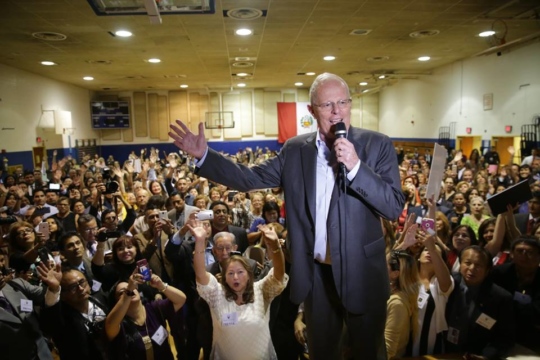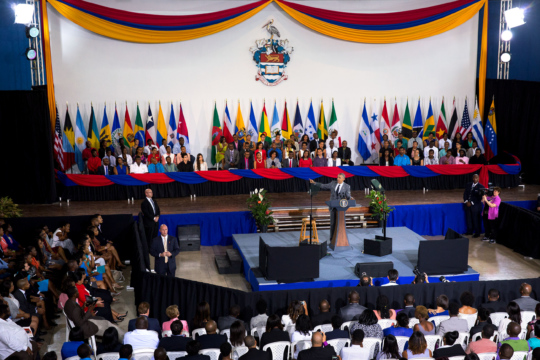
PPK’s Dilemma: Balancing Business & Social Protections in Resource-rich Peru
The arrival of business-friendly Kuczynski, more commonly known as PPK, promises to bring important changes to the energy and mining sectors.
In early July, the investigative journalism site IDL-Reporteros published an extensive investigation revealing an entrenched network of corruption in Peru’s judiciary wherein at least five judges manipulated sentences in exchange for favors, including in a case involving the sexual abuse of a minor. The investigations were based on tapes that were given anonymously to IDL in which judges and other judicial officials could be heard negotiating favors in exchange for reduced sentences, verdicts of innocence, and judicial appointments that benefited interested parties, among other things.
Overall, the recordings featured over a dozen members of Peru’s highest judicial bodies, including the Minister of Justice, Salvador Heresi; the president of the Judiciary, Duberli Rodriguez; the president of the National Magistrate Council, Orlando Velasquez; the president of the Superior Court in Callao, Walter Rios; and Cesar Hinostroza, a President of one of the penal chambers of the Supreme Court, who is heard on a telephone call negotiating the sentence for a man who had raped an eleven-year-old girl. Following the revelations, most of the actors named resigned or were suspended from their posts, and in mid-July Peruvians took to the streets to demand judicial reform in the midst of a corruption crisis so pervasive that even a judge appointed to investigate judicial corruption after the initial revelations, Luis Cevallos, ended up being on the take.
The tape recordings that have toppled Peru’s judiciary recall the vladivideos that were the undoing of the Fujimori dictatorship at the dawn of the 21st century. In fact, Fujimori, who was sentenced to 25 years in prison for human rights violations and corruption, is but one of various disgraced Peruvian ex-leaders, including President Pedro Pablo Kuczynski, who resigned in March after secretly recorded videos revealed supporters of his government offering illicit benefits to members of Congress; Ollanta Humala, who is currently awaiting trial for charges of campaign finance money laundering, among other things; and Alejandro Toledo, who is fighting extradition from the US on Odebrecht-related corruption charges. The past decade has left behind a wasteland of disqualified presidential candidates and public officials ousted for corruption and abuse of office.
The paradox of Peru is that persistent political and institutional turbulence has had little impact on economic growth, unlike the situations in Brazil, Venezuela, or Argentina. In fact, the country has largely thrived through the chaos. The economy has grown at an average of 5.9% over the past decade, largely due to aggressive free-market policies that have created an investment-friendly environment and the participation in various regional and bilateral economic alliances that boost trade. Peru’s economy is widely considered one of the strongest and most stable in the region, continuing to grow even after the 2014-15 commodity price shock. This growth is credited with the significant reduction in the percentage of Peruvians living in poverty over the past decade.
According to leading Peruvian political scientist Alberto Vergara, this prosperity in spite of politics shouldn’t be surprising. For decades, political and business elites in Peru have pursued “wealth without law,” emphasizing investment and strengthening financial institutions without reinforcing regulatory or judicial mechanisms. In a sense, political weakness may even be a feature, not a bug, of Peru’s modernization drive, allowing private companies to act unimpeded. Some have even argued that efforts to fight graft—such as Peru’s recent contracting freezes in the wake of Odebrecht revelations—are a burdensome drain on economic growth.
Charitably speaking, Peru’s inclination to growth over institutionalization could be seen as a sort of libertarian experiment—getting the state out of the way in a country where economic mismanagement has more than once led to disaster. But, while in the short term Peru has defied research that shows that institutional factors—such as corruption, bureaucratic inefficiency, and lack of trust and satisfaction in government—are consistent structural obstacles to prosperity, cracks are beginning to show. The cycle of political dysfunction and uncontained corruption has been a slow and long-term drain on the economy: Peru’s pervasive embezzlement and corruption scandals are costing the country an estimated $3 billion annually, and the President of Peru’s National Society of Industries estimated that the recent judicial fiasco comes at a sticker price of $1.2 billion, with the added casualty of deterring investment and reducing job growth. Already, 2017 was the first year since 2001 in which the poverty rate increased.
President Martin Vizcarra has taken a strong stance against corruption. On July 13, Vizcarra commissioned a Committee on Judicial Reform, and incorporated their recommendations in a speech to Congress on Peru’s Independence Day, during which he also proposed to hold referenda on a number of political reforms to mitigate corruption, including banning private campaign financing and prohibiting re-election. For now, it is all rhetoric: the proposals will have to be approved by Congress, and, most importantly, will have to be undertaken with adamantine political will to combat corruption and conflicts of interest. Ultimately, investment and economic development are unsustainable without clean government, and Peru would do well to take steps to root out corruption before graft overcomes growth.
The arrival of business-friendly Kuczynski, more commonly known as PPK, promises to bring important changes to the energy and mining sectors.
When leaders from nearly all the countries of the Americas gather in Lima, Peru next week, the unique circumstances may lead to a historic event: the first Summit of the Americas defined by honesty about the fundamental disagreements that shape the relationships among the United States, Canada, Latin America, and the Caribbean.
